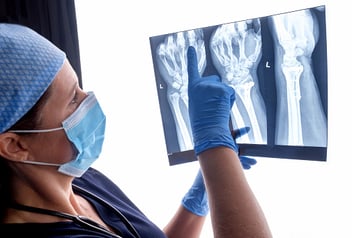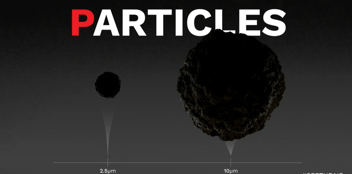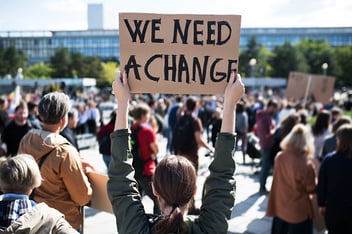Do you know how much air we breathe in a day?
Did you know that air is just as crucial to our survival as water and food? It's true! Breathing is the driving force behind our daily activities and is what keeps us alive. But have you ever stopped to wonder how many times you breathe in a day, or how much air you take in with each breath? Believe it or not, these are important questions that can reveal a lot about our bodies and health.
According to the American Lung Organization, a person consumes 2000 gallons of air every day; which is enough almost to fill up a normal-sized swimming pool. On average, a person inhales up to 6 liters of air in a minute. Let us look at a few terms that help us understand the intake of air and the capacity of our lungs:
Vital capacity: it is the maximum amount of air that can be breathed out after breathing in as much air as possible. Taking part in regular aerobic exercise has been shown to increase a person's vital capacity.
Breathing rate (frequency, BR): the number of breaths in a minute. The average breathing rate is 12 breaths per minute.
Tidal volume (TV): it is the amount of air breathed in with each normal breath. The average tidal volume is 0.5 liters (500 ml).
Minute ventilation (VE): it is the total volume of air entering the lungs in a minute. The average minute ventilation is 6 liters per minute.
But how does our lung process all that air?
The lungs are the largest organ in our body. The respiratory system transports oxygen from the air we breathe, through a system of tubes, into our lungs and then diffuses it into the bloodstream, whilst carbon dioxide makes the opposite journey.
The lungs are divided into different regions, each with a specific function. The trachea or windpipe, for instance, transports the air you inhale into the bronchial tubes, which lead to the alveoli. The alveoli are tiny air sacs that exchange oxygen and carbon dioxide with the bloodstream. Each lung contains about 300-400 million alveoli, which together provide an immense surface area for gas exchange to occur. When you inhale, your diaphragm and intercostal muscles contract, creating space for your lungs to expand and take in air. As you exhale, these muscles relax, and your lungs deflate, pushing used air out of your body.
The size of the two lungs in the pair differs from one another, but the combined surface area of both lungs is around 1500 miles. That’s about the distance from Mumbai to Nagaland.
Now the question is, Why do we do nothing about the compromised air we breathe?
Our lungs are working tirelessly to keep us healthy and alive. However, we often take them for granted and fail to recognize the importance of breathing clean air. Unfortunately, the air we breathe is often contaminated with pollutants, which can cause a range of health problems and damage our lungs over time. It's disheartening to see the lack of action toward air pollution, especially when the consequences of inaction can be so devastating. The air we breathe is essential for our survival, yet we continue to take it for granted, paying no attention to mitigating air pollution from major sources like emissions from factories, transportation, and other sources that cause the most harm to our bodies. It's like deliberately playing with our lives, ignoring the warnings from nature and our health conditions.
Want to know about the Technology that can improve the quality of air that you breathe? Read more!
Click now to switch sides and become the one
that contributes to clean air.
References:
https://www.bbc.co.uk/bitesize/guides/z3xq6fr/revision/3
https://www.lung.org/blog/how-your-lungs-work#:~:text=2%2C000%20Gallons%20a%20Day,pumped%20through%20your%20heart%20daily.

.svg)
.webp?width=1080&height=1080&name=Free%20Case%20Study%20Steel%20Plant%20(1).webp)







Post Comments